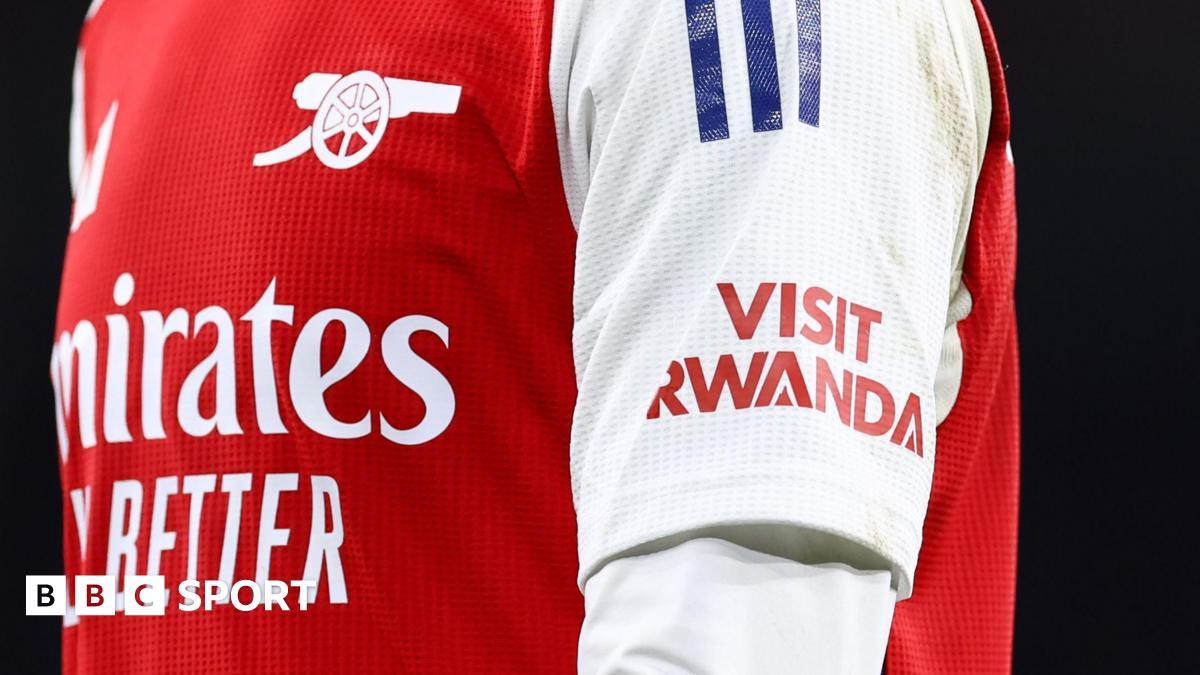EMOTIONS TUG AT Clayton Powell-Lee as he pulls open the doors to the Georgia Tech football team facility a few minutes before noon on Monday. The 21-year-old strong safety has spent some sleep-deprived nights for the past month searching for an answer to perhaps the most consequential choice of his life: Stay put on his current team or transfer in search of a bigger payday.
Decision time has arrived.
If he stays at Georgia Tech for his final season of eligibility, he can build on his 53 tackles as a starter last season, after which he landed a six-figure name, image and likeness contract with the school. But Powell-Lee says he’s worth more. His agents — Jacob Piasecki and Jason Bloom of A&P Sports Agency — and his mother agree.
Earlier that morning, Georgia Tech had declined to negotiate an increase, Powell-Lee’s agents said. But the market for defensive backs is booming, they told him, and chances are good he could double his current payday. Provided, that is, he was willing to set aside his notions of team loyalty, leave his hometown Atlanta and abandon the school where his father, Gary Lee, had caught touchdown passes for the Yellow Jackets in the 1980s.
Sitting outside the team facility moments before entering, Powell-Lee dials into a conference call with Piasecki, Bloom, and his mother, Rometta Powell. All had agreed to let ESPN listen in.
“They need to be shook awake,” Rometta Powell says to the group. “They’re trying to play games. They’ve got the money.”
The pressure is building on Powell-Lee. The next step, they tell him, is to go upstairs and get the paperwork from a compliance officer to enter the transfer portal. Powell-Lee agrees with the others on the call, hangs up and pulls open the doors. But instead of the compliance office, he soon finds himself standing in the doorway of head coach Brent Key.
“I told him I had an offer on the table,” Powell-Lee said. “I have an offer on the table, and it’s sitting there in front of me.”
THE TRANSFER PORTAL — a phrase heard often in the NIL era but perhaps little understood by the general public — is extinguishing any remaining pretenses of amateurism in college football. Twice a year, players are set loose in an untamed, largely opaque marketplace to seek new teams and increasingly large sums of money. There are few, if any, universal truths or safe blanket statements that fully describe how this emerging world operates, but during the 10-day opening of the portal starting April 16, ESPN received an inside look at how some agents and general managers work with athletes and their families to sort through their options.
The player. The agents. The recruiter. All come together at the portal. This is a glimpse of the frenzied new reality of how college football rosters are formed.
The construction of a college football roster has changed dramatically in the past several years thanks to the introduction of NIL deals that serve as de facto salaries and a federal court order that allows players to transfer with almost no restrictions. The portal serves as a formal declaration that athletes are interested in hearing from new suitors.
The transfer market moves with the force of a riptide. Coaches act fast to fill the gaps in their rosters. The waves of players who enter risk losing their spot if they hesitate to pick a new school. To speed things along, the nitty-gritty aspects of deal-making in the portal are often sorted between two relatively new creatures to the college football universe: a team’s general manager and a player’s agent.
Gone are the days of predictable rosters and lengthy recruiting courtships where coaches sat in prospects’ living rooms to make their pitch. While many players will still visit campus and meet the coaching staff before officially signing with a team, most of their decisions are made in a matter of days through an onslaught of text messages, phone tag and two-minute calls that reach fever pitch on the day the portal opens.
JACOB PIASECKI HAS his phone pressed to his ear when he arrives at A&P Agency’s offices in Austin, Texas, shortly after 9 a.m. on April 16. Six of his agency’s roughly 120 clients have already declared their interest in transferring as of the portal’s opening day, and by the sound of the current call another player is eager to join them.
The SEC player on the other end of the line just finished his post spring-practice meeting with his coaches. The player has learned he’s not a guaranteed starter and therefore isn’t likely to receive a pay bump from his current $50,000 NIL contract.
Piasecki waves Bloom, A&P’s general manager, into his glass-walled office from across the hall. They both believe the player can command first-stringer money if he decides to transfer, which would mean making between five and 10 times what he currently makes.
The player’s parents have already called the coach to ask for more information. Are the coaches playing games to keep his value down? Parental intervention is exactly what Bloom and Piasecki don’t want. The agents’ goal, they say, is to serve as the sole point of contact with teams and move forward strategically. They coordinate with the player and his parents, setting up a plan to ask his current team for a raise before exploring options. By the end of the day, that player will be in the portal, but for now the morning’s first brushfire has been extinguished.
The corridor leading to Piasecki’s office is lined with boxes of promotional merchandise soon to be mailed to clients. The decor consists of posters and footballs signed by players A&P has represented. On one bookshelf along with memorabilia are two thick textbooks: Astrophysics and Quantum Mechanics. They are the last vestiges of the physics degree he was wrapping up at Texas A&M when he decided to launch his agency alongside co-founder Stefan Aguilera.
That was 2021, the first year that college players could make money from NIL deals.
They have since built a six-person team and partnered with a fellow Texas A&M alum, attorney Tony Buzbee, whose law firm reviews the contracts that A&P players sign. The agency says last year they generated roughly $1.25 million in revenue. Physics class is mostly a distant memory — a number they say should grow this spring as they represent a number of highly ranked players in the transfer portal.
“Physics teaches you to take really complicated problems and break them down into smaller pieces to solve one at a time,” Piasecki said. “And that’s pretty much what we’re doing here. It’s just piecing together a ton of small problems.”
POWELL-LEE MET with Piasecki and Bloom in early March to discuss what he wanted to get out of his last season of college football. That’s when the emotional tug became apparent. On the one hand, Powell-Lee said he wanted to finish his career and get his degree at Georgia Tech. On the other, he wanted a showcase to maximize his NFL draft potential.
He told the agents he would consider other schools if he couldn’t get a better deal from Georgia Tech.
“Obviously when you’ve been in a place for so long and coaches know you, you don’t necessarily want to leave,” Powell-Lee told ESPN. “But at this point, college football is a business. Decisions have to be made with money and playing time in mind. … Jacob and Jason have a lot of connections, so it’s about just letting them be my ears in the market.”
A&P’s team spends most of the spring working phones or traveling to meet with general managers from as many teams as possible, the agents said.
In mid-March, Piasecki and Bloom visited the University of Virginia. The Cavaliers’ recruiting director, Justin Speros, told them his coaches’ wish list included one or more defensive backs. The agents mentioned Powell-Lee among others who might be interested in transferring.
Coaches and staff members are prohibited from contacting any player who has not yet formally entered the transfer portal, but there are no rules against contact with agents to register a team’s needs. Schools, generally, won’t make any specific promises before a player is in the portal, but the current system provides ample gray area to make it clear to agents and their athletes what kind of money they could stand to make in the portal. So Powell-Lee’s “offer on the table” would have been more conceptual than literal during his meeting with his coach.
“I might say ‘Hey I need corners, so if you’ve got a guy, call me up once the portal opens,'” Speros told ESPN. “This past winter was really the first year that if you weren’t talking to the agent you weren’t really recruiting a kid. You’re eight steps behind if you don’t know about a kid before he hits the portal.”
Bloom calls Speros at 12:36 p.m. on April 16, hours after the portal has officially opened. As the phone rings, he and Piasecki scan through lists and spreadsheets. One includes estimates of each client’s potential market value, calculated using their recruiting rankings, college experience, Pro Football Focus rating and current demand at their position among other factors. Another lists teams and their current needs, based on information the agency gained from contacts earlier this spring.
Every past offer any team has made to one of their players is also recorded along with contract comparisons organized by position and conference to get a sense of the market. Unlike the NFL, player contracts are not public in college football. Good data is hard to find.
Using an agent — especially those that represent scores of clients — can help athletes get access to a better picture of the market. But that comes at a cost. A&P takes an 8% cut on most of the Power 4 conference players it represents. That number can go as high as 15%, especially for young players or FCS-level players who won’t generate as much attention in the portal on their own.
It’s not clear how many of the thousands of athletes who entered the transfer portal this year are represented by agents, but several industry experts estimate that more than half have no representation.
Throughout the first day, Bloom and A&P’s director of scouting, Will Scott, constantly monitor online lists of players who have just entered the portal. A new listing is a new potential client. Scott has data on around 200 players he’s evaluated ahead of time that A&P would like to represent if they want to transfer.
They reach out to players via direct message on Instagram to gauge their interest. Bloom calls to pitch prospects, usually citing the agency’s relationships with general managers throughout the country and unique brand endorsements they’ve arranged for athletes in the past, such as an arranged visit with celebrity jeweler Johnny Dang.
Most of the agents’ day, though, is consumed in a barrage of brief, unemotional phone calls. Some players receive raises from their current teams. Others jump in the portal and start to generate offers.
By 9 p.m. the A&P team is slouched in chairs around a conference room table covered with take-out trays of barbecue. They scroll through social media and text messages while making a plan for the next day, cracking jokes that are a better fit for locker rooms than board rooms.
Most of the A&P team is not yet 30 years old. None of them had experience in the sports agent industry prior to joining A&P. But on just the first day of portal season, the group generated nearly $1 million in new money for their clients. That’s the goal, Bloom says: a million dollars a day while the portal remains open.
“It is a little wild,” Piasecki says to the room, “that we’re just six guys in an office in Texas, but we’re shaping a market for these institutions that bring in millions and millions.”
IT’S LATE THURSDAY morning and Day 2 of the 10-day sprint. At the University of Virginia, Justin Speros says he’s happy with his progress hunting for tackles and defensive ends, but defensive backs are proving to be an elusive, rare commodity in this spring’s portal.
Bloom and Piasecki are on the phone pitching Speros with prospects from their growing list of portal-declared clients. The agents offer defensive ends, a tight end and a running back.
Speros cuts them off. “I’m wasting my breath right now if I’m not talking about DBs, guys,” he says.
Speros tells ESPN that, for any position where he needs one or two players to fill out a depth chart, he knows he’ll need roughly 10 “hooks in the water” to make it work. Sometimes players they’ve scouted will choose another team. Others come with too high of an asking price.
“We prefer not to be transactional, but it just is what it is,” Speros says. “There are things we need to do to keep pressing forward. And what that means is a lot of either just getting to a number or not getting to the number and moving on.”
Speros and Tyler Jones, a deputy athletic director, oversee the budget for building out their roster. For this spring, their total spending power is a somewhat flexible number that combines the money the school is expecting to be able to share with players directly starting this summer along with contributions from the school’s booster collective.
Speros and his staff have done months of scouting hundreds of players across college football to get a sense of what they’re willing to pay. As new players who might fit Virginia’s needs enter the portal, a group of interns creates short film cut-ups of their highlights so the coaching staff can evaluate the players based on about a dozen plays. Virginia also uses multiple data analytics programs to rate players and get a sense of their market value.
With one of the team’s starting cornerbacks out for the season with an ACL tear and a current seller’s market for the defensive backfield, Speros acknowledges he’ll have to act fast and potentially pay high rates to fill that gap on the depth chart.
Bloom tells him that Powell-Lee is scheduled to meet with his coaches at Georgia Tech the following day and will make a decision about the portal soon after. Speros expresses interest. Enough interest, in fact, that he’s willing to sit tight on a few other options at safety until he hears about Powell-Lee’s decision.
A long weekend passes, and Powell-Lee is still unsure of how he wants to proceed. During spring practice, he told reporters he had developed a new sense of chemistry with his fellow defensive backs at Georgia Tech and felt a duty to help the younger players get settled into their new positions.
He hasn’t heard the answers he wants from coaches when he’s asked about a raise, but now, with less than a week before the portal window closes, ambivalence sets in as he approaches the team facility to start the portal-registration paperwork.
His agents say Powell-Lee would be crazy to pass up the money he could get in the portal. His mother, Powell-Lee says, has been supportive throughout the process but also tells him not to shy away from getting what he’s worth.
Still, he says, something doesn’t feel right.
“I was just sitting there, I was just thinking to myself, like, something in my heart and my gut is just telling me not to go grab those papers right now, but instead go up there yourself and tell them that you want to talk to them,” Powell-Lee said a few days later.
He said his discussion with Key, Georgia Tech’s head coach, went well. And later that night, he discovered some new information that made his decision much easier: Virginia will only accept up to 60 credit hours of previous coursework for any transfer student. For Powell-Lee, that would mean essentially erasing a year’s worth of credits he’s earned at Georgia Tech, making it impossible to graduate in the same academic year that he wraps up his college football career.
“I had to really just sit there and ask myself, is that really worth losing all those credits to make however much money?” Powell-Lee said. “Personally, I was like, no, it’s not fully worth it, honestly.”
Powell-Lee declined to say how much money he was potentially leaving on the table other than to say it was “a lot.”
By Wednesday, Powell-Lee had officially decided he wasn’t going to enter the portal. Virginia and Speros had already moved on to search for new options on defense. Piasecki and Bloom said Georgia Tech agreed to provide him with a relatively small increase in pay after learning about some of his other options — but nothing that compared to what other schools thought they might be willing to pay him.
“It just is what it is,” Bloom said. “That’s the business we’re in.”
Even though the transfer portal often makes it seem that money trumps all other considerations, sometimes there are refreshing surprises. For Powell-Lee at least, academics ultimately tipped the balance.
Source link

















